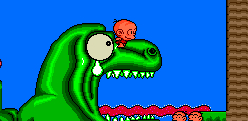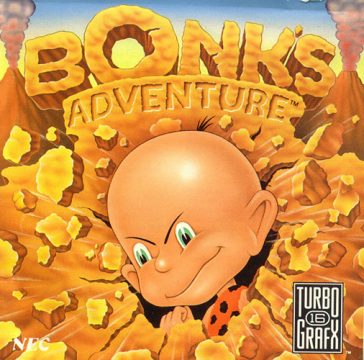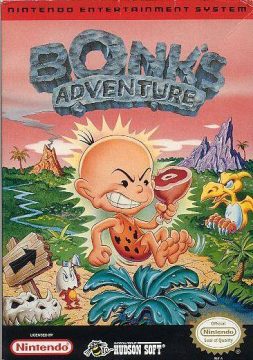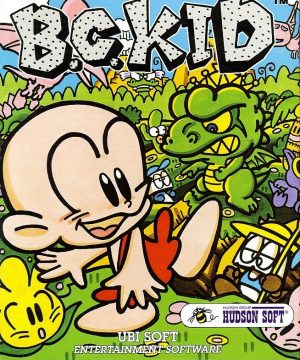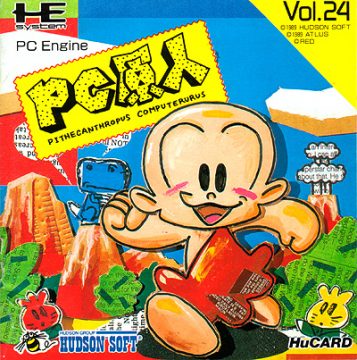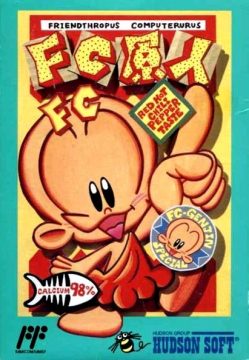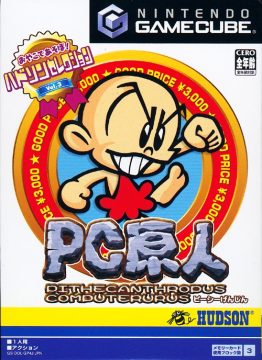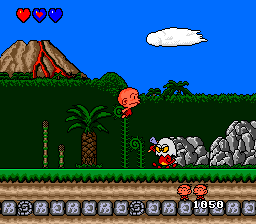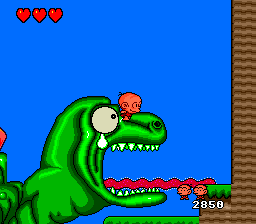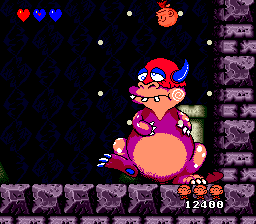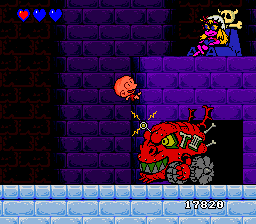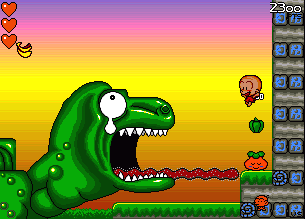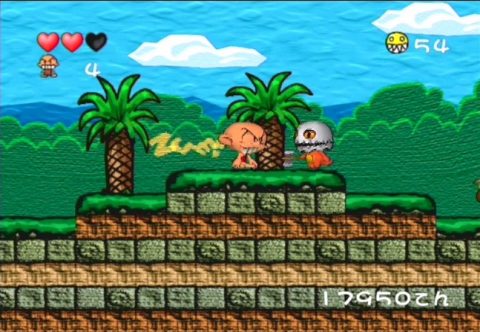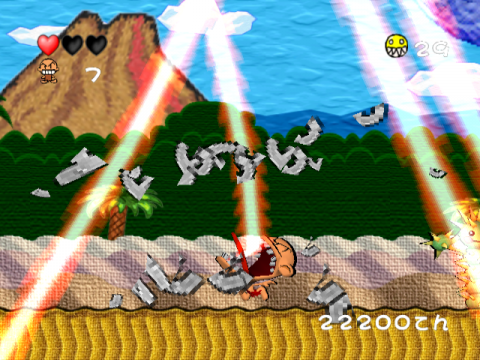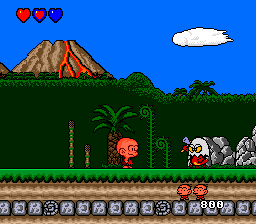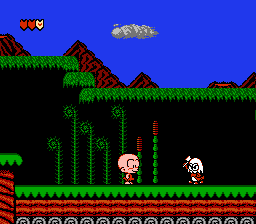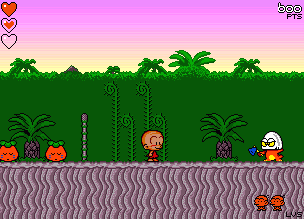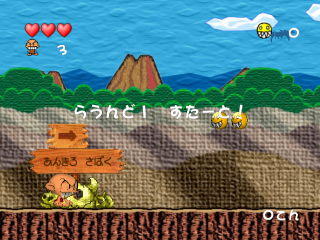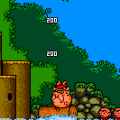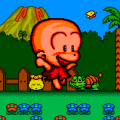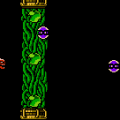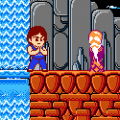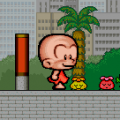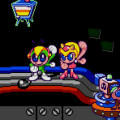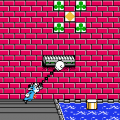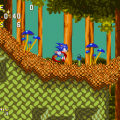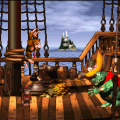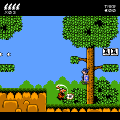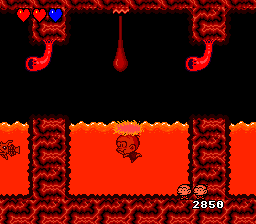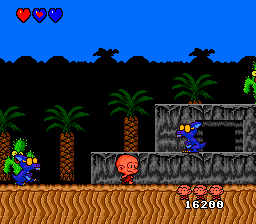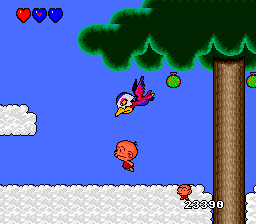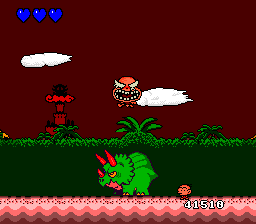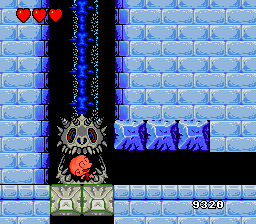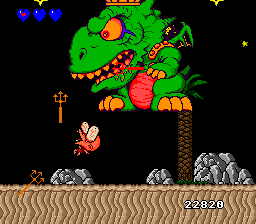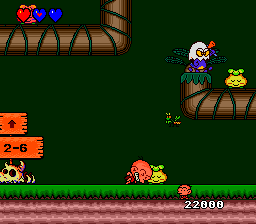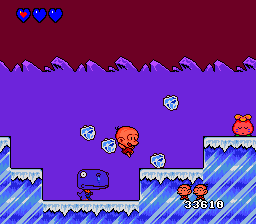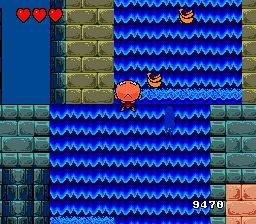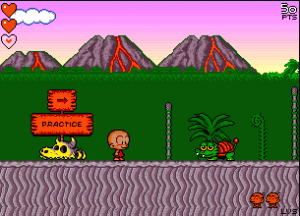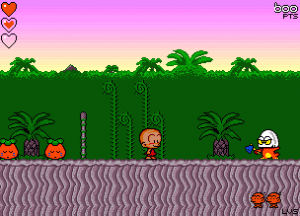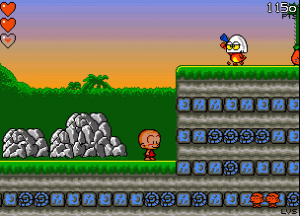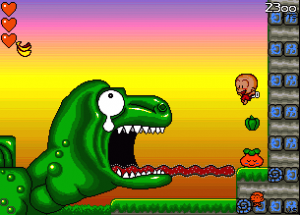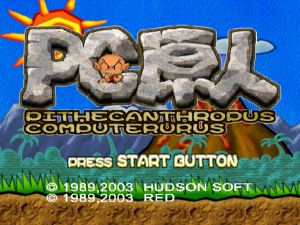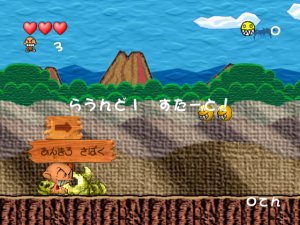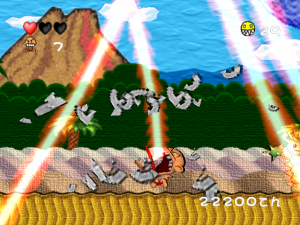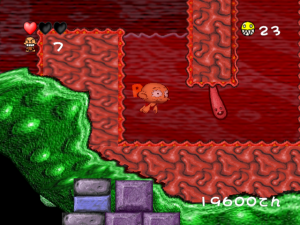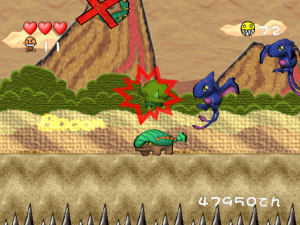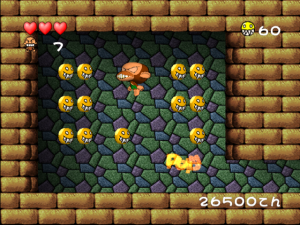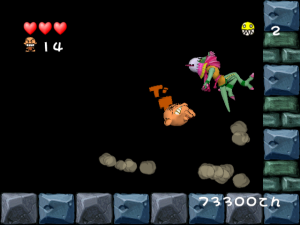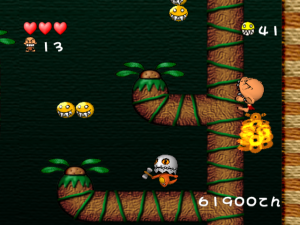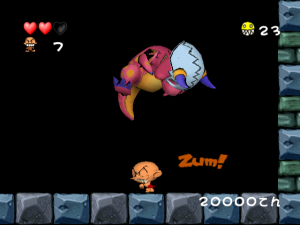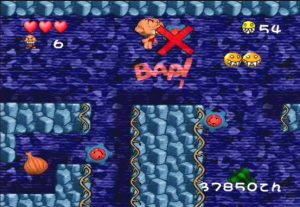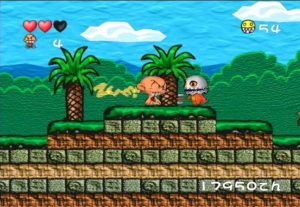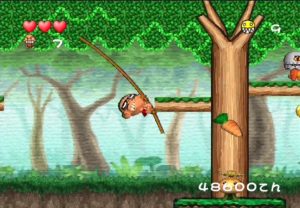Video gaming has always had mascots, stretching all the way back to Namco’s Pac-Man, and including such memorable characters as Mario and Luigi, Alex Kidd, Opa Opa, Mega Man, Simon Belmont, and many others. In the 16-bit era, the concept of a mascot became even more important for console manufacturers. The NES was the clear winner of the previous generation, but things were starting fresh with the 16-bit era, which eventually resulted in one of the most compelling console wars in video gaming.
At the forefront of this movement was Bonk, the mascot of NEC’s TurboGrafx-16, produced by Red Entertainment, developed by Atlus, and published by Hudson. It is important to note that Bonk predated Sonic the Hedgehog, as well as the release of the Super Famicom and Super Mario World, making him the first of his kind for the time. Bonk is a caveman, who possesses a gigantic head that’s practically made of stone, which he can use in a variety of ways to crush foes. He’s goofy and likable, everything a proper mascot should be, and the games themselves are enjoyable for all ages. The expanded ROM space and color palette of the 16-bit systems also allowed for additional information and more detailed sprites. The result is a comical world full of amusing enemies, including recurring dino baddie King Drool, and starring a pleasant little hero with nice little smile that can totally tear things up, given the opportunity.
In North America, the caveman has always been known as “Bonk”. However, he’s taken on a number of different names in his native country of Japan, where he was initially known as “PC Genjin”. This is obviously a rhyming pun on the PC Engine, the Japanese version of the TurboGrafx-16. The “PC” stands for “Pithecanthropus Computerurus,” a humorous allusion to “Pithecanthropus erectus,” one of the first human-like fossils discovered. “Genjin” simply means “Caveman.” However, his name was often officially translated as “PC Kid” and became known as B.C. Kid in his few European endeavors. In porting to other platforms, he gained other names – FC Genjin (“Freakthoropus Computerus”) for the Famicom, GB Genjin (the “GB” doesn’t mean anything here) for the Game Boy, and Super Genjin for the Super Famicom.
For the most part, Bonk’s Adventure is a typical sidescrolling platformer. Compared to the ingenious level designs of the Super Mario games or the blazing speed of the Sonic titles, it seems a bit on the quaint side, but that doesn’t mean it’s not an incredibly fun game.
Bonk’s primary method of attack is obviously his gigantic head, which is so powerful it can knock enemies off the screen or block flying axes. However, your range is a bit limited, so it’s often more useful dive bomb enemies – by jumping and hitting the attack button, Bonk will flip upside down and smash head first into bad guys. This will catapult him back in the air, allowing you to hop on several enemies in succession, Super Mario-style. If you’re feeling particularly daring, if you knock an enemy skyward, you can continue to juggle him by hitting him with your head, which gives you increasing point values.
Bonk can also flip several times in mid-air, allowing you to extend the range of his jumps. Turn on the turbo controls on the TG16 pad and you can watch him flip out mid-air, guiding him slowly to his destination. Bonk can also grab onto certain walls by grabbing on them with his teeth and slowly using his rock hard molars to scale up to the top of the platform. In a few areas, he can also swim up current against waterfalls, allowing him to scale mountains. In other words, despite his cutesy demeanor, Bonk’s a pretty bad dude.
Each level in Bonk’s is populated with a variety of large flowers. Yellow flowers act as trampolines and allow you to jump to great heights. Red flowers will either grant you power-ups, or turn into evil grinning shadow plants that bounce around the screen. There’s a plethora of fruit to be found, each of which slightly increases your life meter. You’ll also occasionally find smiley faces, which are totaled up at the end of each stage and are used to regenerate your health. Most important are the legs of meat hidden around. When Bonk eats a small one, the spiciness causes his top to explode, sending him into an angry state with a visibly pissed off look on his face. When agitated, you can dive bomb the ground and cause a minor earthquake, freezing all enemies in their tracks for a few seconds. After a short period of time – or when Bonk takes a hit – he’ll cool down and return to his normal state. If you eat two small pieces of meat, or one large one, Bonk will completely flip out and turn invincible for a short period of time.
Whenever Bonk runs out of hearts, he’s knocked unconscious (although the foaming at the mouth is perhaps a bit much). Upon pressing Run, you’ll wake him from his nap and bring him back into play, naturally losing a life in the process. This instant resurrection may make some parts of the game pretty easy, but you’re carried all the way back to the beginning of the stage if you completely run out of lives and need to continue.
The controls have a couple of quirks that can get annoying. In order to reach most platforms, you need to make a walking jump, or else your leap won’t take you far enough. Whenever you land from a jump, there’s a split second that Bonk squats on the ground – you can still move, but you can’t jump until he gets back up, which makes jumping in succession a bit troublesome. The hit detection on the dive bomb attack is also a bit suspect, especially during boss fights – it might seem like you hit a vulnerable spot, but instead you end up taking damage. Considering how prolific the fruit power-ups are, however, this isn’t a gigantic problem.
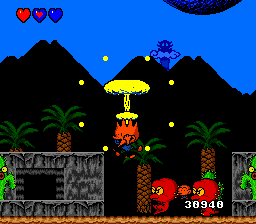 The game world is full of amusing creatures. The most prominent are dinosaurs with egg shells on heads, with huge bulbous eyes and tiny little legs that scurry back and forth. There’s also the expected assortment of dinosaurs – T-Rexes, Tricerotops, Pterodactyls, and others. At the end of the first stage, you encounter a gigantic dinosaur – you need to hop in its mouth and swim through its stomach to reach the end. Much like the doors that adorn the entrance to each boss fight in Mega Man, Bonk is carried to each major enemies with a prehistoric elevator made of a dinosaur skull. Each of the five bosses are under some kind of mind control, and each can only be set set free by destroying the helmet on their heads. When you’ve shattered it, they come to their senses and congratulate you, as Bonk jaunts happily off on to the next stage. The next-to-last boss is a fight against Princess Za, who uses a remote control to pilot a giant tank with the head of a T-Rex. The final level goes all out and takes place on the moon for some reason. These surreal elements, accompanied with the amusing anachronistic devices, bright graphics and amusing animation, are ultimately what define Bonk as a standout title, one of the best of the early 16-bit era.
The game world is full of amusing creatures. The most prominent are dinosaurs with egg shells on heads, with huge bulbous eyes and tiny little legs that scurry back and forth. There’s also the expected assortment of dinosaurs – T-Rexes, Tricerotops, Pterodactyls, and others. At the end of the first stage, you encounter a gigantic dinosaur – you need to hop in its mouth and swim through its stomach to reach the end. Much like the doors that adorn the entrance to each boss fight in Mega Man, Bonk is carried to each major enemies with a prehistoric elevator made of a dinosaur skull. Each of the five bosses are under some kind of mind control, and each can only be set set free by destroying the helmet on their heads. When you’ve shattered it, they come to their senses and congratulate you, as Bonk jaunts happily off on to the next stage. The next-to-last boss is a fight against Princess Za, who uses a remote control to pilot a giant tank with the head of a T-Rex. The final level goes all out and takes place on the moon for some reason. These surreal elements, accompanied with the amusing anachronistic devices, bright graphics and amusing animation, are ultimately what define Bonk as a standout title, one of the best of the early 16-bit era.
Even though Bonk was the mascot of the TurboGrafx-16, it didn’t stop Hudson from publishing his games on other, competing platforms. A few years after the initial release, a port was made for the Nintendo Entertainment System (dubbed FC Genjin in Japan and simply called Bonk’s Adventure in North America). The colors are obviously downgraded, but it still looks surprisingly good, and controls pretty well too. However, due to limited cartridge space, a number of levels have been cut, and the remaining ones have been shuffled around a bit. It’s also quite a bit easier since there aren’t as many enemies on screen at once.
There was also a Game Boy game known as Bonk’s Adventure in North America, although it’s technically a new game and not a port. Bonk’s Adventure was also packaged on a 3-in-1 Super CD along with Bonk’s Revenge and Gate of Thunder as a pack-in for the Turbo Duo. (Bomberman was also a hidden game on the CD.) It’s identical to its HuCard incarnation, although it has a small intro where Bonk steps into a spotlight and introduces the game’s menu, complete with voices (“UGA BONK!”) and cool scaling effects.
Since the TurboGrafx-16 wasn’t released in Europe, Bonk’s Adventure was ported to the Amiga by Factor 5, allowing a wider audience to enjoy the game. It’s more than just a straight port – the graphics have been significantly improved, especially the backgrounds, which give off a nice pastel hue. Most of the music is brand new, although a few of the old tunes appear, and it’s generally quite good. They even translated the stage names this time around. Surprisingly, this is probably the best rendition of Bonk’s Adventure out there. Interestingly, both the Amiga and NES versions use Bonk’s redrawn sprite from Bonk’s Revenge, which definitely looks nicer than his original TurboGrafx-16 sprite.
In 2003, Hudson started its Hudson Best Selection series of games for the PlayStation 2 and GameCube. Similar to the Sega Ages lineup around the same time, these standalone releases would remake classic Hudson games with modern 3D graphics. Hudson’s series was nowhere near as expansive as Sega’s – in addition to PC Genjin, the rest of the line included Adventure Island/Takahasi Meijin no Daibouken, Cubic Lode Runner, and Star Soldier – but they’re all higher quality.
The PC Genjin remake sticks closely to the original template, with the same gameplay mechanics and mostly the same levels, although there are some changes here and there. All of the sprites are 3D models now, which is a bit of mixed bag. Bonk looks fantastic, with a ton of new and wacky facial expressions – Bonk changes into a monkey in his agitated state, and appears to be holding his breath as he swims – but the enemies in general look pretty dull and lack much of the personality from the 2D days. At least the animation when he eats a piece of meat is cool, where he screams and breathes fire that ricochets across the screen.
All the sound effects – even the little clomps when walking – generate huge onomonopaea words in English like “BONK” whenever you hit something. It’s distracting at first, but kinda cute. The backgrounds are still 2D, and utilizes a cartoonish style that gives this remake a more unique look. The music consists of “grade up” versions of the original songs – it’s like they took the original Turbografx music, remastered it, and added in a few extra instrument tracks like drums. It’s a cool way to arrange the songs in a way that stays very close to the original but still sounds unique.
Additionally, in each level, you need to gather specific types of fruits and vegetables. If you complete enough levels with these bonuses, you’ll eventually unlock extras like television commercials. There are also three difficulty levels to complete in order to unlock everything. Enemies inflict more damage than before, and while healing items are rarer, the game is filled with smiley faces. Much like the later Bonk games, grabbing 100 will grant you an extra life, rather than refilling your health at the end of each stage. Unfortunately this means that the little victory romp where your smileys were totalled up are completely missing. Some of the boss battles have been changed too, and not for the better. In the TG16 original, the first boss was absolutely huge. Now he’s been shrunken down to half his size and has a different attack pattern.
Even though it suffers from low tech 3D graphics, it’s still a decent remake, even though there’s not much new to recommend it over the TurboGrafx-16 original.
Links:
The Bonk Compendium Excellent fan site
The Definitive Bonk Another history article by the guy from BonkZonk.com (archived by the Wayback Machine)
